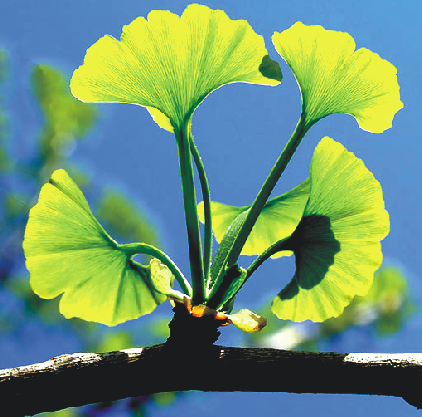




 Town Map
Town Map






Fossil leaves from Ginkgo trees have been found in Scotland but of course the Ice Age created an environment in which no trees could survive and only after the retreat of the ice did plants reestablish. It is this point in time that is used to decide whether trees are native or non-native but of course very few species colonised the early wastes of cold tundra - others came as the climate warmed. The tree varieties found in Britain have come within a dynamic environment - as that has changed, so too have the species that have colonised. That is still true today where many of our trees have to survive pollution [see: London Plane], paved areas and ideally not affect buildings because of their root systems - as well as progressively tolerating more variable conditions.
The Ginkgo biloba is one of the oldest living tree species in the world. It's the sole survivor of an ancient group of trees that date back to before dinosaurs roamed the Earth – however it is now an endangered species in the wild and is mainly found growing in cultivation. It has one interesting feature very useful to our changing climate in that it’s leaves change how they respond to any increase in carbon dioxide and study shows it to be high on the list of ‘anti-pollution’ trees .
In the UK, and many other places there is a debate over native and non-native species being used but the reality is that even in our woodlands there are species that are ‘classed’ as being non-native, Our much loved Beech, from which much of our furniture is made, is one of them; along with Larch, Elm, London Plane, Sycamore, Walnut, Cypress, White Poplar, Holm Oak, Sweet & Horse Chestnuts. Many of our fruit trees can be added to the non-native list; Apples, Plums, and Cherries amongst them. Many scientists would agree that trees survive and prosper in a climate that suits them and as we experience more extremes in our weather we should be looking for varieties that can tolerate drier summers and wetter winters - the debate should not be cut short without seriously considered thought.
All the trees (and their positioning) on this tree trail have been discussed with arboreal specialists















 Town Map
Town Map















